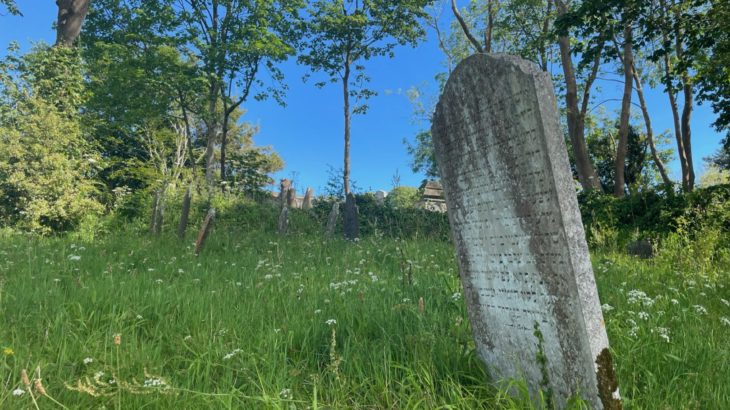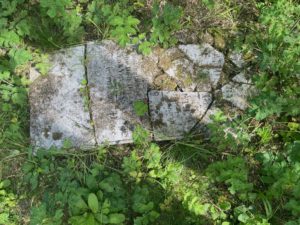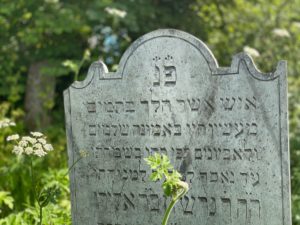
SWWDTP post graduate researcher Amy Smith recently completed a placement with Falmouth Town Council Cultural Services at Ponsharden Cemeteries. She shares details below of the story of the cemetery and the work she did with them.
When I was growing up, Ponsharden Cemeteries was the local wilderness. It was overgrown, sadly vandalised, and we could barely see any headstones from where we dared to stand. Friends would dare me to get close to it, and with the characteristic Smith Bravery (or lack thereof), I never would.
Today, it couldn’t be more different. As I discovered on a six month part-time placement, it is well on its way to becoming a public space where residents and visitors can reflect on our town’s historical diversity. There are two burying grounds alongside one another: the Jewish Cemetery and the Dissenters’ Burying Ground, which is the final resting place for the nonconformists of Falmouth. Together, they are known as Ponsharden Cemeteries: two distinct spaces that share a deep history of inclusion and exclusion.

You might think that a placement undertaken during a pandemic might be too tricky to work out. But one of Ponsharden’s pull factors was the outdoor nature of the space: with social distancing and masks, I was able to meet up with wonderful volunteers and council members while adhering to restrictions. On top of that, it gave me a completely new experience. Although I have worked in galleries and museums before, I had never worked in an outdoor space. ‘Interdisciplinary activity’ is something we discuss a lot within the university walls. But organising a photoshoot while an archaeological dig is occurring in a sacred space gave me a real taste of how to work in groups where everyone has differing priorities in reaching a shared goal.
I should probably explain why I was organising a photoshoot. On the placement, I was tasked with creating a digital presence (primarily, a website) for the Cemeteries. This meant researching our intended audience and anticipating potential barriers to accessibility. From there, I chose a web theme that would meet the needs of visitors and the council members running it in the future. I took a huge amount of disjointed information – books, flyers, existing web profiles – and created copy for the whole site. I wasn’t just tasked with writing ‘about’ the Cemeteries; I had to think about ways I could convince website visitors to offer their time or donations. And, of course, it had to look good; which is why I was monitoring the weather for the best photoshoot conditions (overcast is ideal, but a bit of blue sky looks lovely), and then racing down there, making sure not to step over graves while choosing the best angles to fit specific spaces on the website.

Public health restrictions varied over the course of the six months and there were times when I was able to meet with local podcasters, history experts, religious figures, archaeologists, and council members. By interviewing them, I was able to create an editorial calendar for future content, while also making new friends and potential connections for projects later in my PhD. So while the placement required a lot of solo work, a little bit of pragmatism made it a far more sociable affair than I had expected a pandemic placement to be.
As researchers, we have a lot to give in terms of public history. But a lot of the time, we can’t ‘do’ public history well without getting experience in the basics of digital communication. No matter what you end up doing after your PhD, speaking with people beyond the University will be absolutely crucial for getting your research out there. I’d encourage everyone on a placement to think about ways they can start building their experience in communicating research digitally. And if you’ve got any questions, you can just send them over to ky18478@bristol.ac.uk – I’m always happy to meet up for a coffee (and it doesn’t have to be in a Cemetery!).
Categorised in: Student Blogs